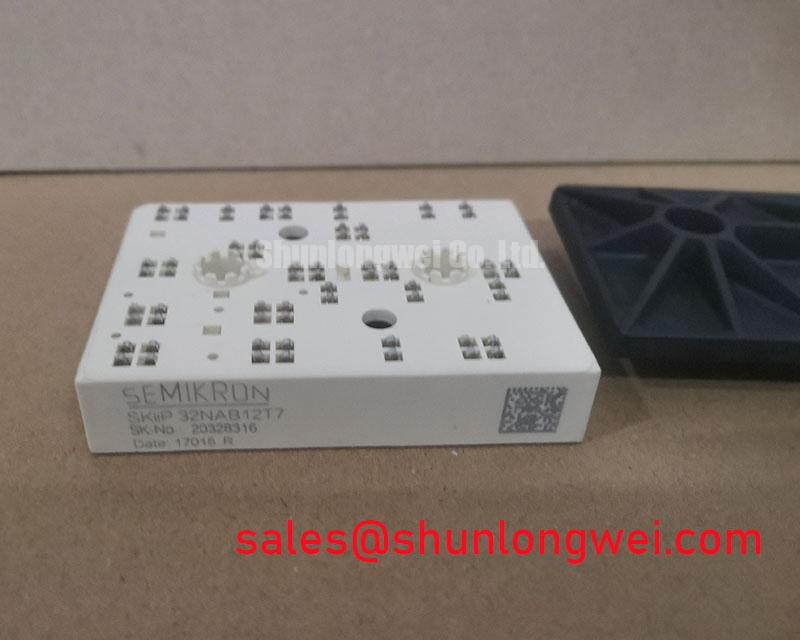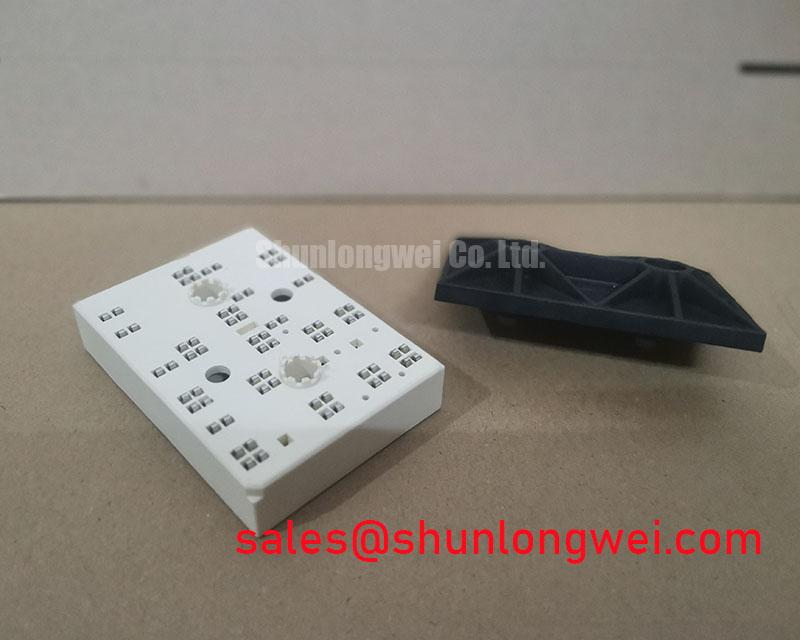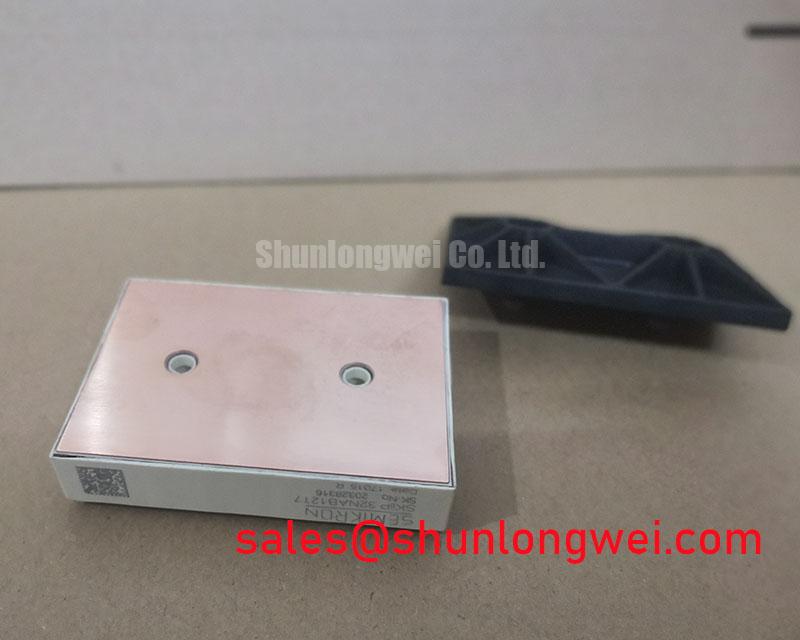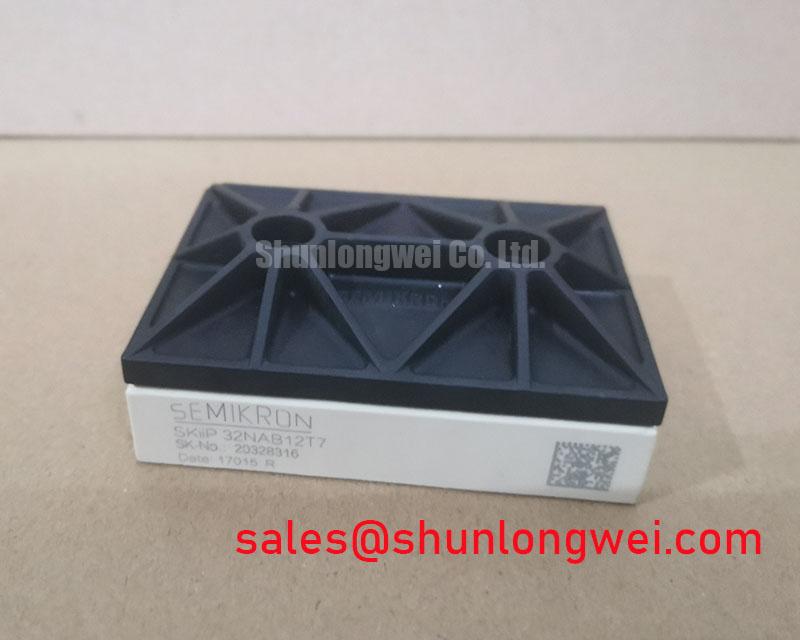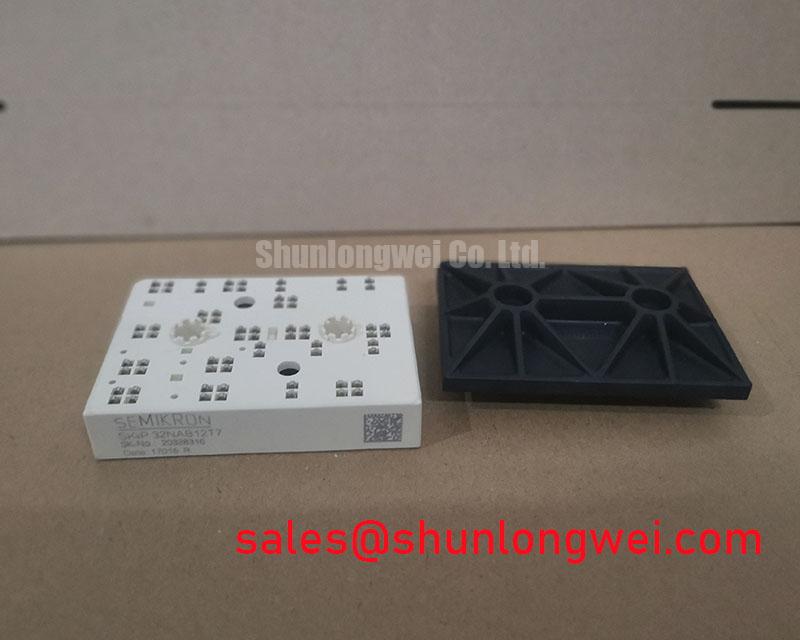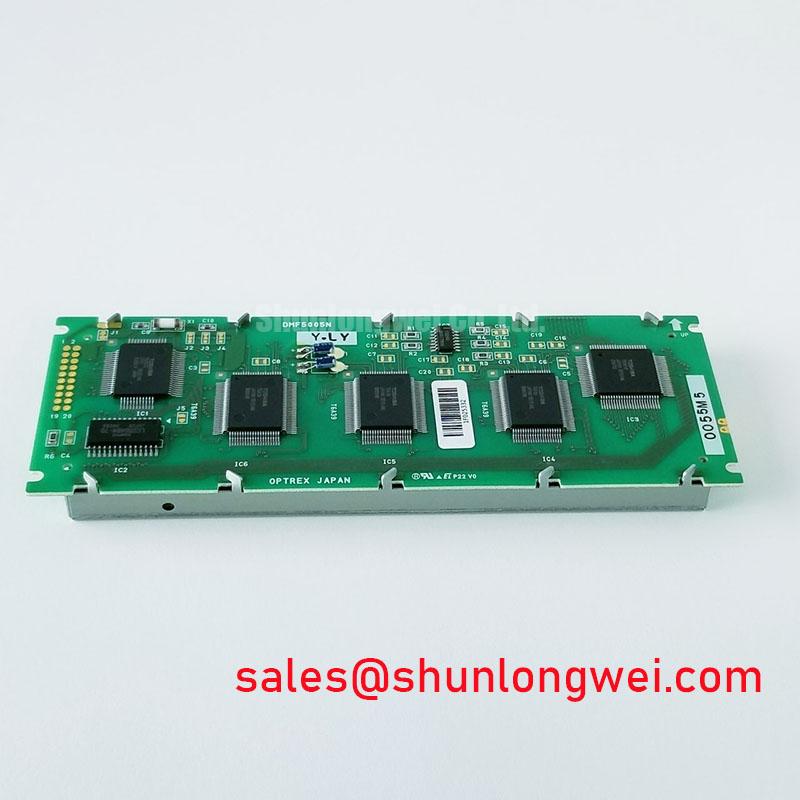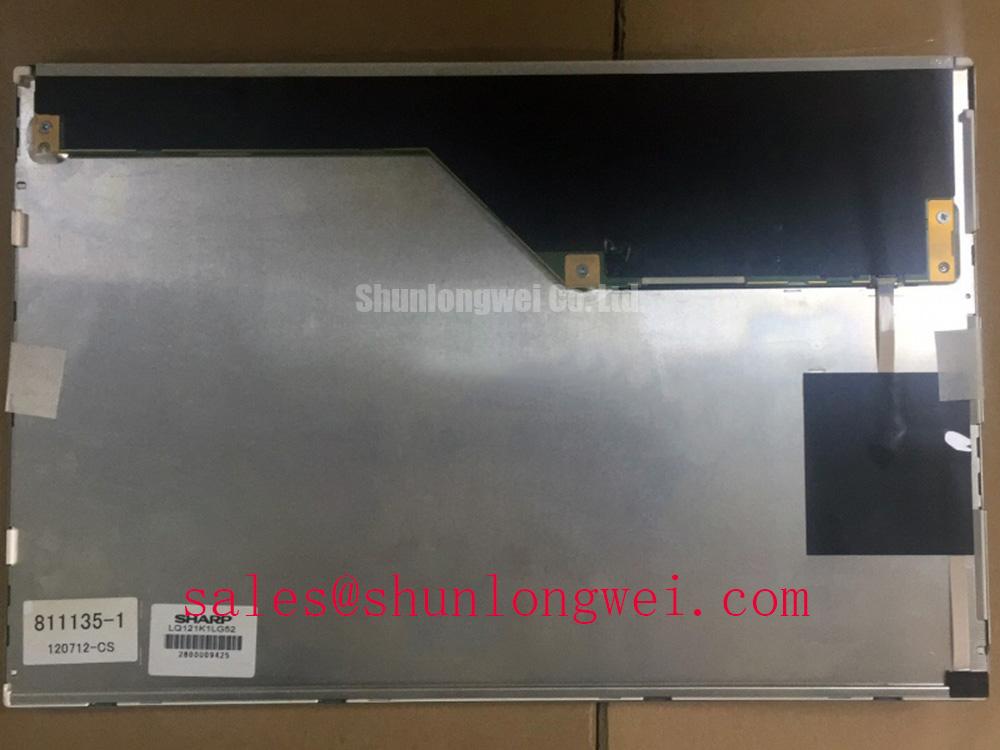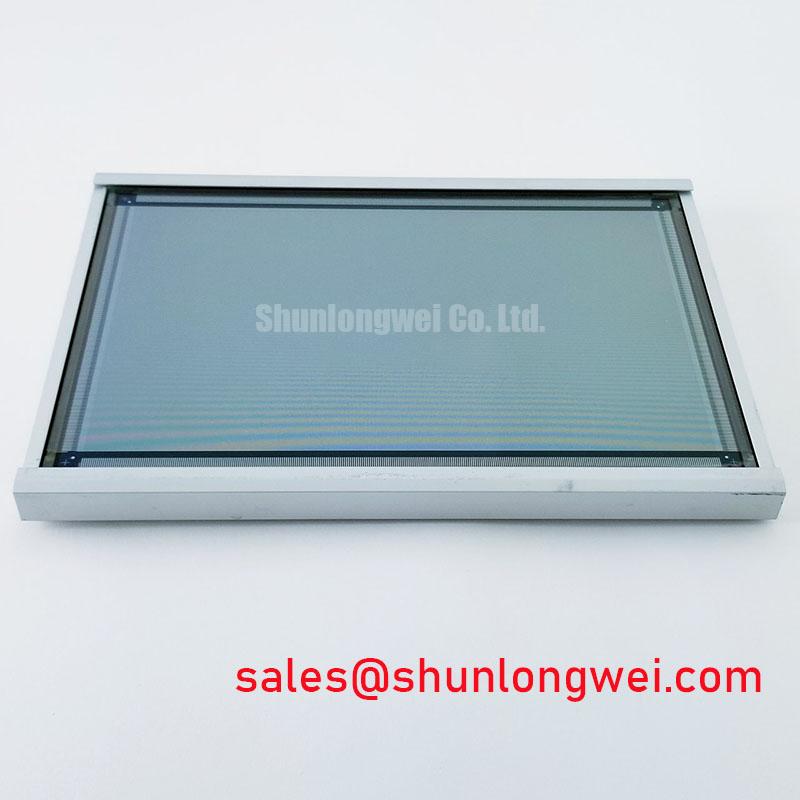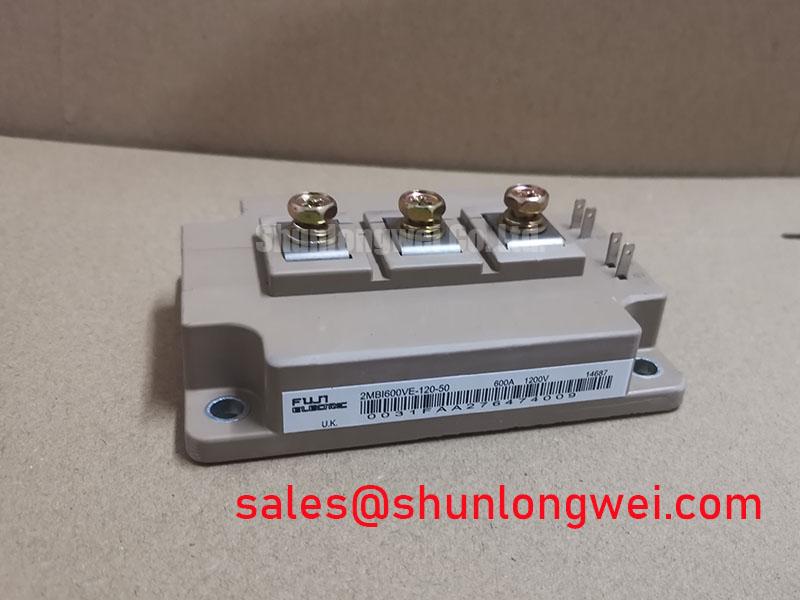Content last revised on October 26, 2025.
SKIIP32NAB12T7: 1200V IPM for High-Reliability Motor Drives
Product Overview: Core Specifications and Engineering Advantages
The SKIIP32NAB12T7 is an advanced Intelligent Power Module (IPM) that delivers exceptional reliability and thermal performance for variable-speed drive applications. Its integrated design combines 1200V Trench-Gate IGBTs and CAL freewheeling diodes with a fully featured gate driver, significantly simplifying system design and assembly. Key specifications include: 1200V VCES | 75A Nominal Current | VCE(sat) 1.85V. This integration provides superior overcurrent and short-circuit protection while its pressure contact technology ensures a robust, solder-free connection to the heatsink. For designers of compact industrial drives, this module directly addresses the challenge of achieving high power density without compromising on long-term operational life. Best fit for systems up to 30 kW requiring high thermal cycling capability and simplified control logic.
Key Parameter Overview
Decoding the Specs for Thermal Efficiency and Control
The technical specifications of the SKIIP32NAB12T7 are architected to deliver a combination of electrical efficiency and thermal stability. The parameters below highlight the module's suitability for high-frequency switching applications where minimizing losses and managing heat are primary engineering objectives.
| Parameter | Value | Engineering Significance |
|---|---|---|
| VCES (Collector-Emitter Voltage) | 1200 V | Provides a robust safety margin for applications on 400V to 575V AC lines, critical for industrial Variable Frequency Drive (VFD) systems. |
| IC, nom (Nominal Collector Current) | 75 A | Defines the continuous current handling capability under specified conditions, suitable for motors in the 15-30 kW range. |
| VCE(sat) (Collector-Emitter Saturation Voltage) @ IC, nom | 1.85 V (typ.) | A low saturation voltage directly translates to lower conduction losses, which improves overall system efficiency and reduces heat generation. |
| tsc (Short Circuit Withstand Time) | > 10 µs | Ensures the module can survive catastrophic short-circuit events long enough for the integrated protection circuitry to safely shut down the system. |
| Rth(j-c) (Thermal Resistance, Junction-to-Case) per IGBT | 0.32 K/W | This critical value indicates superior heat transfer from the semiconductor to the heatsink. It's like having a wider pipe for heat to escape, enabling higher power density or the use of a smaller, more cost-effective cooling solution. |
| Integrated Features | Gate Driver, Protection (SC, UVLO), Temperature Sensor | Reduces external component count, simplifies PCB layout, and provides a pre-validated control and protection scheme, accelerating time-to-market. |
Download the SKIIP32NAB12T7 datasheet for detailed specifications and performance curves.
Application Scenarios & Value
System-Level Benefits in Industrial Drives and Power Conversion
The SKIIP32NAB12T7 is engineered for power conversion systems where uptime and efficiency are non-negotiable. Its primary application is in industrial motor controls, particularly in sophisticated Servo Drive and VFD systems that power robotics, CNC machinery, and conveyor belts. In these environments, a common engineering challenge is managing the thermal load in increasingly compact enclosures while ensuring immunity to electrical noise and fault conditions. The module's low VCE(sat) directly reduces conduction losses, a key contributor to waste heat, allowing designers to either push for higher output power or reduce heatsink size for a more compact final product.
What is the main benefit of its integrated driver? A dramatic reduction in design complexity and enhanced noise immunity. By co-packaging the driver and power stages, the high-current loops are minimized, which is a critical factor in achieving reliable performance at higher switching frequencies. This integrated approach also finds value in commercial applications like elevator controls, HVAC systems, and as a core building block for uninterruptible power supplies (UPS). For systems demanding higher power output, the related Skiip38NAB12T4V1 offers increased current handling within a similar technological framework.
Technical Deep Dive
A Closer Look at the Integrated Design for Enhanced Reliability
The defining characteristic of the SKIIP32NAB12T7 is its high level of integration, which extends beyond merely placing components in a single housing. The module leverages Semikron's SKiiP® Technology, which focuses on creating a synergistic power system. A key element is the pressure contact mounting system. Unlike conventional modules that rely on soldered connections to a baseplate, this design uses a precisely calibrated pressure system to establish both electrical and thermal contact. This completely eliminates a primary failure mode in power electronics: solder fatigue caused by thermal cycling. For applications with frequent start/stop cycles, such as servo drives or material handling systems, this translates directly into a longer and more predictable operational lifetime.
Furthermore, the integration of the gate driver unit is optimized for the specific IGBTs within the module. This is akin to having a custom-tuned suspension on a high-performance car rather than a generic one. The driver is perfectly matched to the IGBTs' input capacitance and switching characteristics, ensuring optimal turn-on/turn-off speeds, controlled dv/dt, and minimal switching losses. The integrated fault diagnostics, including a temperature sensor and short-circuit detection, provide a comprehensive safety net that simplifies meeting system-level standards like IEC 61800-5-1 and reduces the burden on the main system controller.
Frequently Asked Questions (FAQ)
How does the pressure contact technology in the SKIIP32NAB12T7 improve system reliability compared to soldered modules?
Pressure contact technology creates a direct, solder-free interface between the module and the heatsink. This eliminates solder layers, which are often the weakest point in a thermal stack and prone to cracking and degradation over thousands of temperature cycles. The result is a significant increase in power cycling capability and a more robust solution for applications experiencing high levels of vibration or thermal stress.
What is the primary advantage of the integrated gate driver in this IPM?
The primary advantage is guaranteed performance and simplified design. The driver is precisely matched to the IGBT characteristics, optimizing switching behavior to minimize losses and voltage overshoots. This removes the complex and time-consuming task of designing and validating a discrete gate driver circuit, reducing component count, minimizing parasitic inductance, and ultimately accelerating the development cycle.
Can the integrated temperature sensor be used for direct thermal protection?
Yes, absolutely. The integrated NTC (Negative Temperature Coefficient) sensor provides a real-time analog voltage output corresponding to the module's internal temperature. This signal can be fed directly into the system's microcontroller or control logic to implement over-temperature warnings and shutdowns, providing a critical layer of protection against cooling system failures or unexpected overload conditions.
Strategic Considerations for System Design
Integrating the SKIIP32NAB12T7 into a power system is a strategic decision that prioritizes long-term reliability and total cost of ownership over initial component cost. By leveraging a pre-validated subsystem that combines power switching, driving, and protection, engineering teams can reallocate resources from low-level circuit design to higher-value system optimization and software development. This module represents a move towards more resilient, power-dense, and intelligent power electronics, aligning with industry trends demanding higher efficiency and reduced field failures in critical infrastructure and automation.

